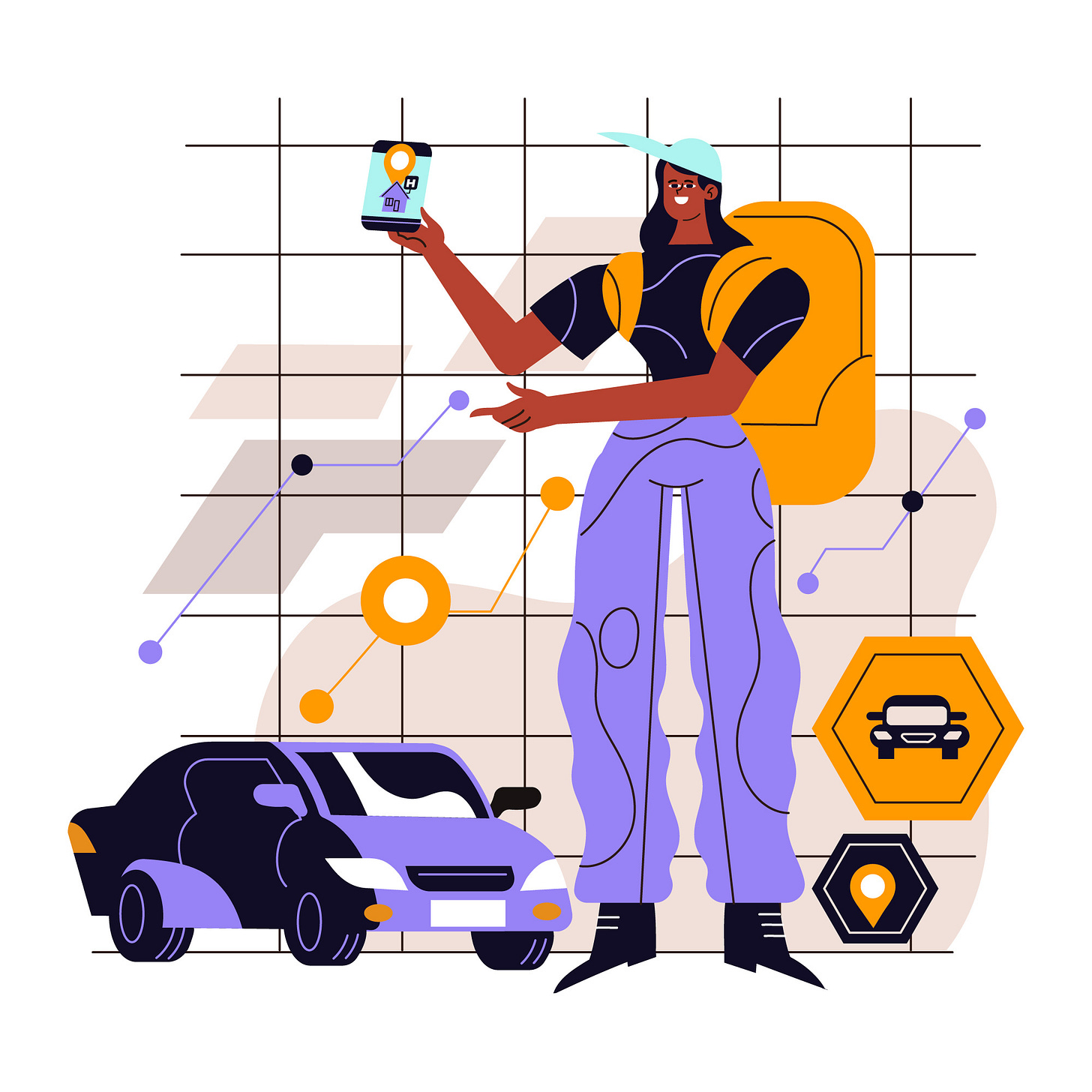AI for Car Repair: Translate Mechanic Jargon, Compare Prices, and Ask Smarter Questions
Real-Life Prompts and Tools That Help You Understand Repairs—Even If You Don’t Speak Car
First time here? This article might help:
The Foreign Language of Auto Repair
You’re standing in the repair shop, nodding along like you understand—but let’s be real, the mechanic might as well be speaking Klingon. Or whale. Or some ancient car language passed down by the oracles of the Temple of Transmission.
You catch a few familiar words—rotor, gasket, maybe caliper—but the rest is a blur of jargon, dollar signs, and vague threats of impending doom if you don’t act fast. Cue the quiet dread of being upsold on a flux capacitor you didn’t even know your 2012 Camry had.
If this scene feels familiar, you’re not alone. Car repairs can make even confident adults feel like lost freshmen in “Intro to Auto Anatomy.”
Good news: you don’t need a degree in car-speak to hold your own. AI tools like ChatGPT, Gemini, and Perplexity can be your translator, research assistant, and confidence coach—all in one.
In this article, I’ll show you how to use these tools to:
Understand what your mechanic is saying
Double-check prices and repair options
Ask better questions before you say “go ahead”
Because while you might not be a gearhead, you can be informed—and that’s a pretty powerful position to be in.
Decode the Diagnosis – How AI Can Explain What Your Mechanic Means
The mechanic hands you a sheet of paper. It lists something about a “failing CV joint” and a “leaking axle seal.” You nod like it all makes sense, but your brain’s just playing elevator music on repeat.
Here’s where AI steps in.
Instead of trying to decode everything yourself—or worse, blindly agreeing to hundreds of dollars in repairs—you can copy and paste the mechanic’s notes into ChatGPT, Gemini, or Perplexity and ask, “Can you explain this in plain English?” Within seconds, you’ll get a breakdown that actually makes sense.
You can also snap a photo of your estimate and upload it straight into ChatGPT or Gemini. Just be sure to crop or blur out anything personal first—like names, phone numbers, or your license plate—before you hit send. (If you're curious why, check out my Trust & Safety with LLMs article for a quick explainer.)
Example prompt #1:
“My mechanic says the CV joint is failing and there’s an axle seal leak. What does that mean in plain English? Is it dangerous? Can I wait to fix it?”
Example prompt #2:
“The mechanic says I need a full front-end suspension replacement to fix the problem. Are there any questions I should ask before agreeing? Could there be less expensive or simpler repair options?”
Example prompt #3:
“Can you explain this estimate like I don’t know much about cars, but still want to make smart choices?”
Whether you're asking about a specific part, exploring repair options, or just want things explained in regular English, AI tools can break it all down. You’ll learn that a CV joint helps your wheels turn smoothly, and if it fails, your car might start clicking around corners or even lose steering control. You’ll also hear that an axle seal leak might not be an emergency, but it shouldn’t be ignored forever. Just like that, you’ve gone from overwhelmed to informed.
You can even ask for follow-ups like:
“Is this something that usually breaks down suddenly?”
“How long could I safely wait to fix this?”
“What kind of symptoms should I watch for?”
This isn’t about not trusting your mechanic—it’s about making sure you understand what’s being done and why. That way, when you ask, “Do we really need to replace the entire assembly, or just one part?” you’re coming from a place of confidence, not confrontation.
Check the Price – Use AI to See What Real People Paid
Once you’ve got a handle on what the mechanic is actually talking about, the next wave of uncertainty usually hits: “Am I about to get ripped off?”
Online price estimates swing wildly—and rarely come with useful context. AI can help you dig into something better: real-world experiences from people who’ve had the same repair.
Instead of just asking, “How much does it cost to replace a CV joint?” try prompting your AI tool to summarize discussions from Reddit, car forums, and other places where people actually share what they paid. That way, you’ll see what people really paid—not just what a website says is “normal.”
If you’re using Perplexity, turn on Pro Search and tell it directly what you want. For example:
“Look at Reddit and car repair forums to find what people paid for a CV joint replacement on a 2016 Honda CR-V.”
“Don’t forget to include any advice from real owners or mechanics who’ve chimed in.”
Perplexity’s Pro Search is especially good at pulling useful insights from forums, Reddit threads, and even social media when relevant. If you’re using ChatGPT or Google Gemini, you can ask for a more detailed research summary—but for this kind of task, Perplexity tends to get you to the good stuff faster and with less fluff.
Feeling adventurous? You could try asking Gemini or ChatGPT to run a deep research function and generate a full report. It’s fun to explore, but for this kind of question—where you're looking for personal stories and street-level pricing—Perplexity still usually wins on speed and clarity.
Pro tip: Don’t forget you can use voice prompts on both desktop and mobile apps. If you’re in the middle of errands or just don’t feel like typing, tap the microphone and ask your question out loud. The tools handle spoken language surprisingly well—no techy phrasing required.
Let’s say you pass a tire shop with a big “4 tires for $299!” banner. Snap a photo and ask Perplexity, “Is this actually a good deal? What are people saying online about offers like this?” It’s not a major repair, but it’s still a smart way to get a quick reality check before you commit.
Example prompts:
“What do people on Reddit and car forums say about brake pad replacement costs for a Toyota Corolla?”
“Summarize common advice on labor costs for replacing a timing belt.”
When you ask for real experiences, you’re more likely to uncover:
Price ranges based on where you live or what kind of shop you’re at
Advice from people who’ve actually been in your shoes
Tips like “ask about aftermarket parts” or “get a second quote if it feels high”
This way, you walk into the conversation with a basic sense of what’s normal, so if something feels off, you’ll be ready to ask smart follow-ups and explore your options.
Prep Like a Pro – Use AI to Ask Good Questions Before You Say Yes
You’ve decoded the mechanic’s lingo and scoped out the real-world pricing. Now it’s decision time: approve the repair or not?
This is where a lot of us freeze. The estimate’s in your hand, the mechanic is waiting, and the pressure is real. Saying “yes” feels like the easiest option—even when you’re not totally sure what you’re agreeing to.
But here’s the thing: with just one or two prompts, AI can help you build a quick checklist of helpful questions to ask before you commit. Not to second-guess your mechanic—but to make sure you’re getting the repair you actually need, and nothing extra.
Example prompts:
“What should I ask my mechanic about a transmission fluid flush?”
“Are there less expensive alternatives to replacing the entire suspension?”
“What else might be affected if the alternator is failing?”
You can even ask AI to lay it all out as a short list:
“Make me a checklist of things to ask before agreeing to this repair.”
And if you’re walking back to your car or sitting in the waiting room, just use your voice. Tap the mic and say:
“Gemini, what questions should I ask before approving a brake caliper replacement?”
But if you really want to level up your prep, try using some of the AI prompting techniques I’ve written about.
One option: ask the AI to take on a role.
“Act like an experienced mechanic. Ask me the kinds of questions you’d expect from a curious customer who wants to understand their repair options.”
Or flip it:
“Pretend I’m the customer and you’re the mechanic—walk me through this repair as if we’re talking on the phone.”
Want to get fancy? Open two AI chats and have them talk—one as the mechanic, one as the cautious customer. You can even drop in your own repair estimate and ask, “Here’s what I’ve got—how might this conversation go?”
This kind of roleplay can help you:
Spot where you might get lost or overwhelmed
Practice asking for clarification (without sounding defensive)
Set your redlines: “I’m not going over $700,” or “We’re doing this in phases—A now, B and C later.”
Get a heads-up on areas where you might need to be flexible—like when multiple parts are connected or failing together
All of this helps you feel less reactive and more in control. Instead of saying “yes” because you feel stuck, you can say “yes” because you’ve thought it through—and it actually makes sense.
You Don’t Need to Be a Gearhead to Be Informed
You don’t have to know what a CV joint looks like. You don’t need to memorize labor rates or read shop manuals in your free time. But you do deserve to understand what’s happening with your car—and what you’re being asked to pay for.
That’s what AI gives you: not expertise, but confidence.
These tools can help you translate jargon, cross-check pricing, and prep for conversations you used to dread. They won’t turn you into a mechanic—but they’ll make sure you’re not left in the dark.
And if you're already using AI in your daily life,this is just one more way it can make things easier, less stressful, and more in your control.
Next time your car starts making that noise, don’t panic—just pull out your phone, open your AI app of choice, and bring your digital pit crew along.
Ever used AI at the mechanic—or wish you had?
Share your story in the comments, or send this to someone whose check engine light just started blinking.







